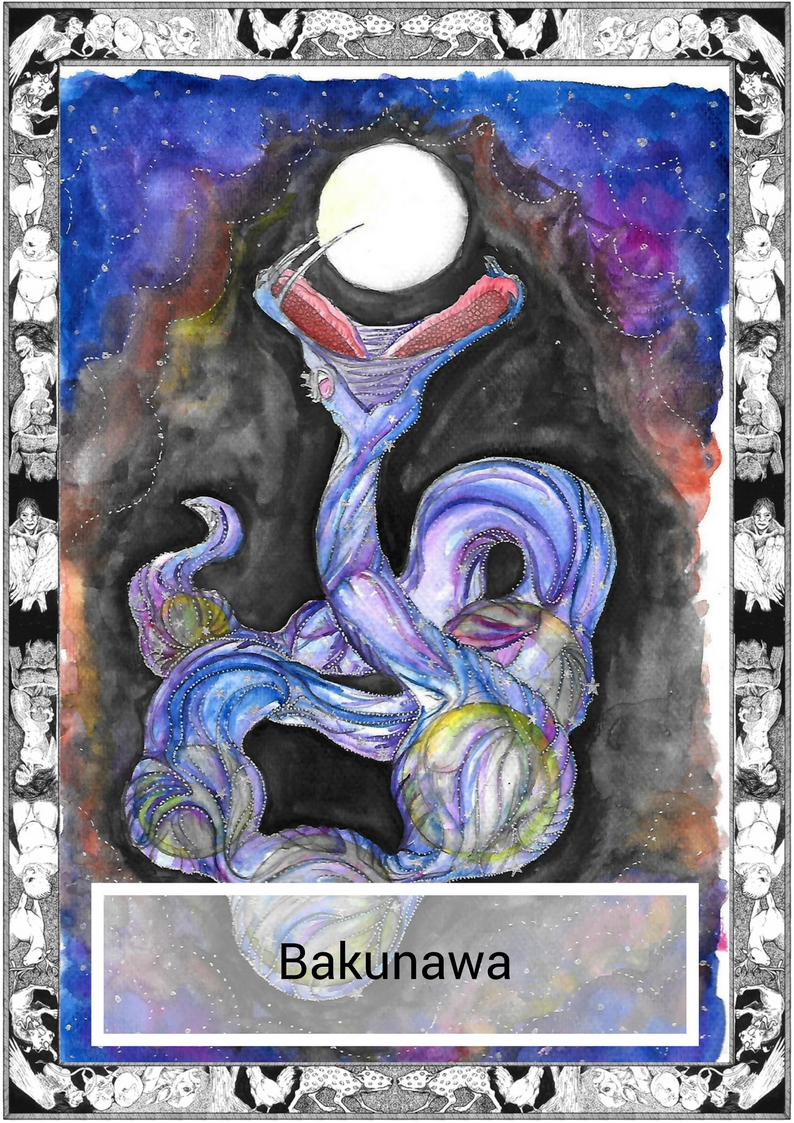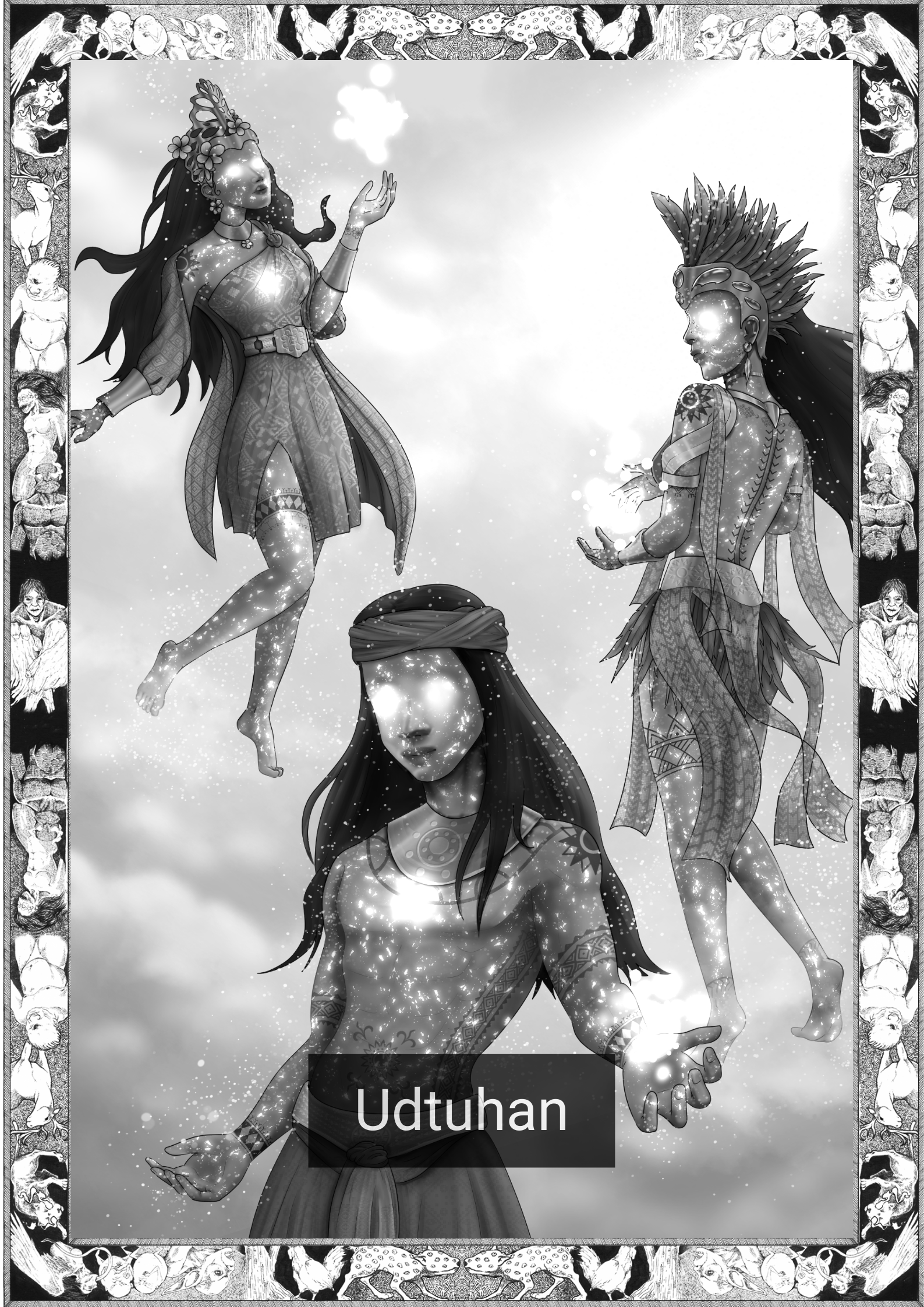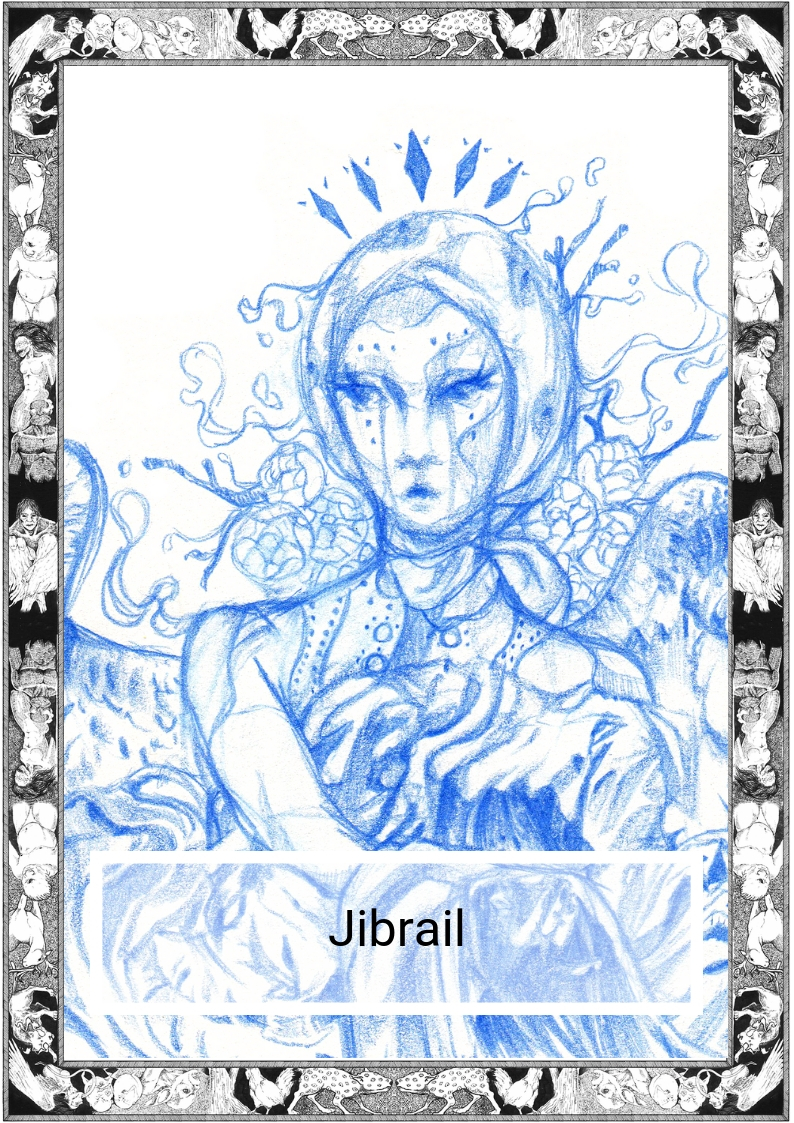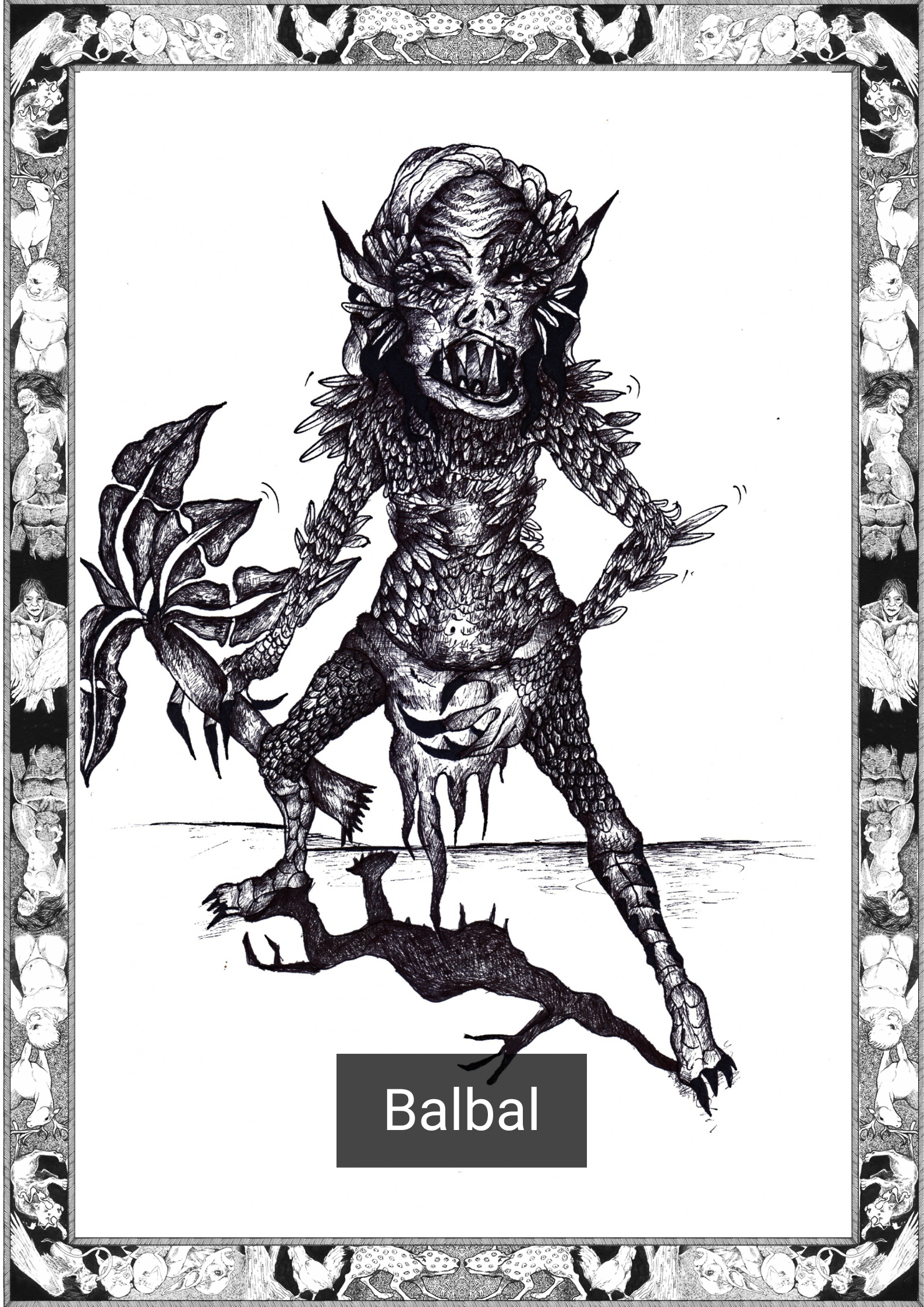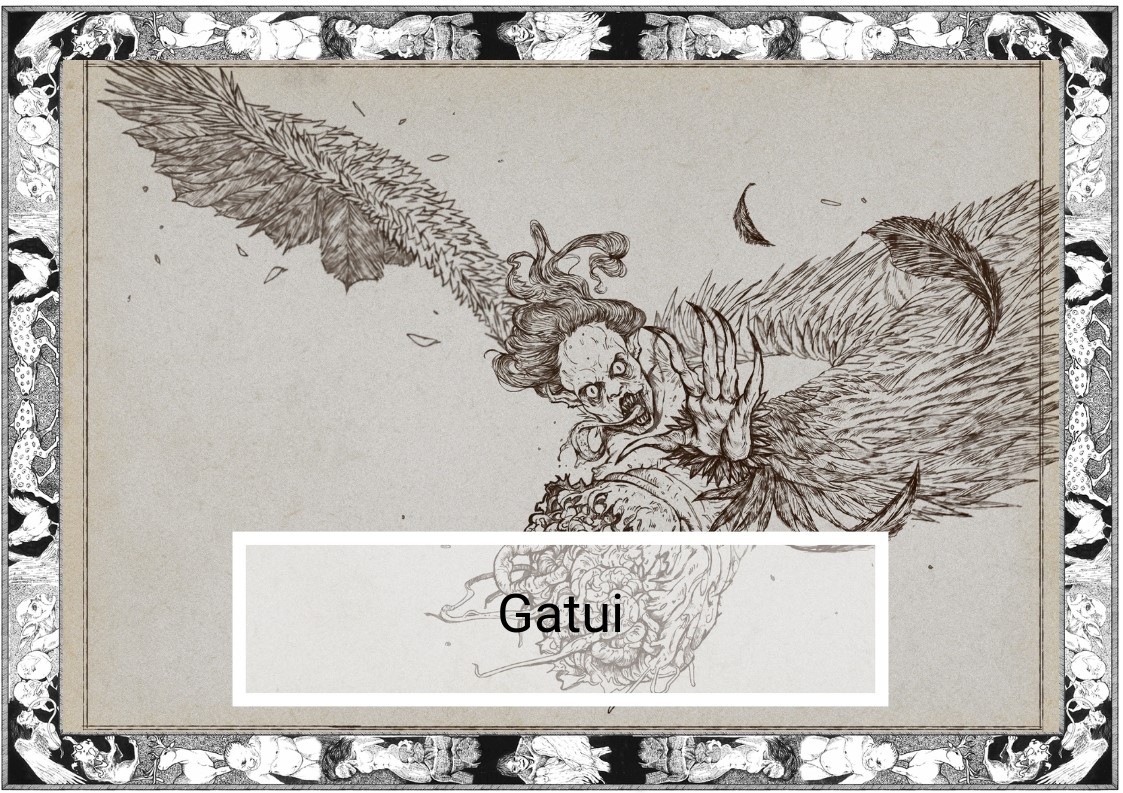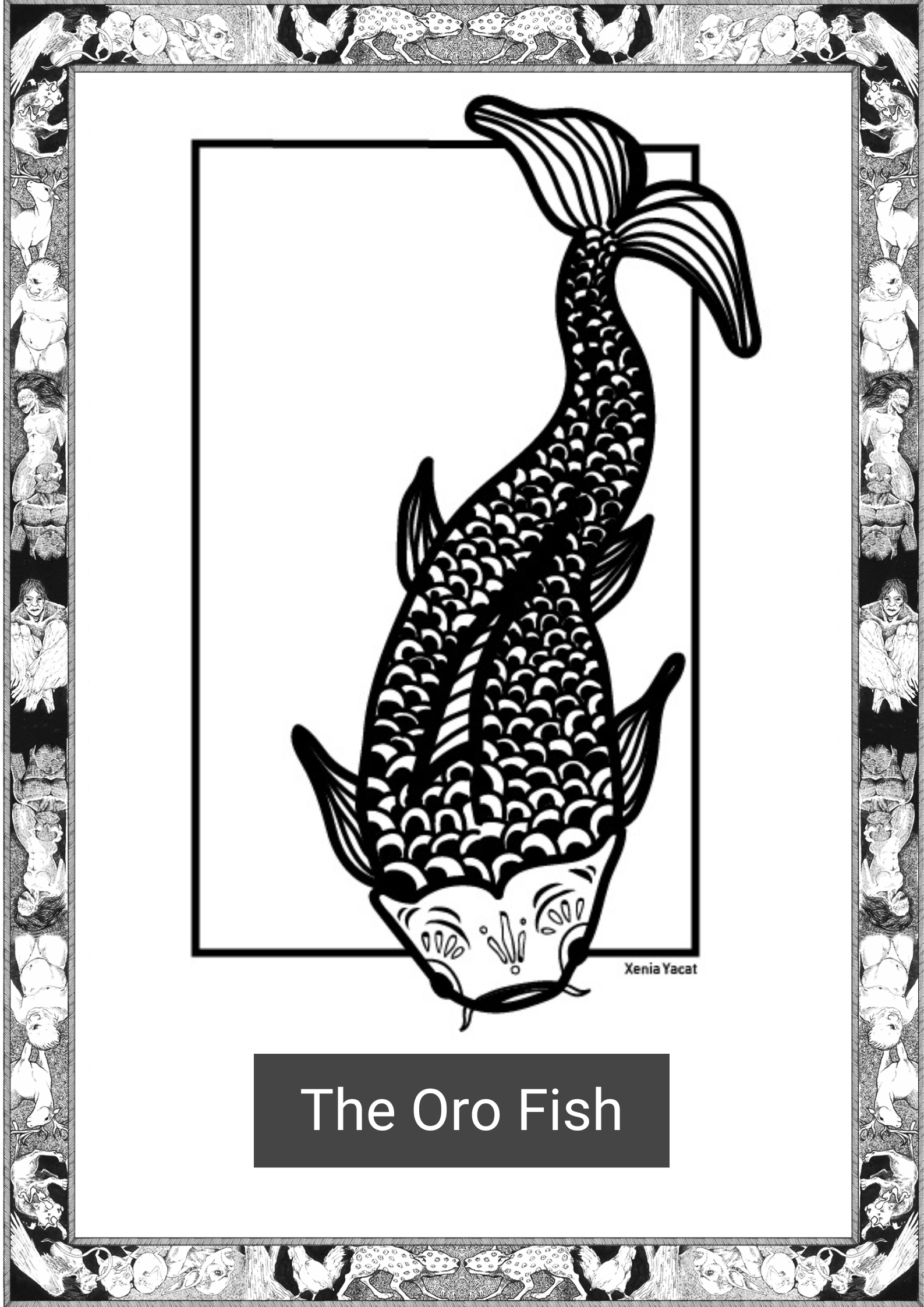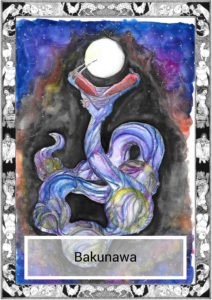
*Note this story is in Ilocano
Pito dagiti bulan idi, ken naminpito met a daras a nagayat ti dakkel nga uleg.
Kada kabsat a babai ket buyaenna a sisiddaaw ken napnuan panagraem kabayatan a lumabasda iti langit ti rabii. Napanunot ti uleg nga tagikuaen dagitoy a napipintas a parsua, ket ginandatna nga alimonen ida a sibubukel.
Dayta ti umuna a rabii nga saan unay a naraniag, gapu ta innala ti uleg ti maysa kadagiti agkakabsat babaen iti nakanganga a pangana sana inalimon daytoy.
Naglabas dagiti bulan ket narunawen ti inalun-on ti uleg a bulan.
Saan a pulos a mapnek ti uleg no saanna a makatagikua ti bulan, isu a pinadasna manen, ngem narunaw latta ti bulan. Innem a daras a ginandat ti uleg, ken innem a daras met a narunaw dagiti bulan.
Ni Bathala, nakatugaw iti tronona iti langit, ket nadlawna a mapukpukaw ti raniag dagiti rabii. Saanna nga ammo no ania ti napasamak kadagitoy, ngem iti naminsan a rabii, nariing isuna babaen kadagiti ikkis ken tambor ti tao.
Dayta ti kanito a padpadasen ti uleg nga alimonen ti maika-pito a bulan.
Pinukkawan dagiti tatto ti natan-ok a dios a bumiang, ta dinto ket ti rabii ket agnanayonen a matakaw ti kinasipnget.
Nangngeg ti uleg dagiti tambor ken pukkaw ket dinardarasna ti nagsubli iti kwebana.
Nagpanunot ti nauneg ti nabileg a Dios. Kasano no gandaten manen ti uleg nga alimonen ti maikapito a bulan? Tapno malapdan ti pannakaaramid manen daytoy a nakabutbuteng a pagteng, nangimula iti kawayan iti rupa ti bulan. Daytoy a kayo ket makita a kas maysa a nangisit a banag iti rupa daytoy no agpangato iti langit ti rabii
Saan a kayat ti uleg ti agpaabak. Di mabilangen ti pananggandatna nga alimonen ti bulan ken di metten mabilang ti pannakapaayna gapu iti pannakibiang ti tao. Dagiti ikkis ken tambor ket nakaro unay para iti dios dagiti baybay, isu a nagsanud iti kwebana nga aguray iti sumaruno a gundaway.
Adda dagiti panglakayen a mangibaga nga agingga nga adda ti kawayan iti rupa ti bulan, saanto a pulos nga agballigi ti uleg, ngem banbantayan latta dagiti tattao ti uleg.
Agingga a ti uleg ket birukenna ti gunggunana, ti makatitileng nga un-uni nga aggapu iti karabukob ken im-ima dagiti babbai ken lallaki ket kanayonto a mangngeg.
=—————————–=
English Version
English Version
Seven Moons there were, and seven times the great serpent fell in love.
Each sister was looked at with wonder and admiration as they passed along the night sky. The serpent thought that he must acquire these lovely beings, and sought to swallow them whole.
It was in that first night that the sky would forever be a little less brilliant, for the serpent took one of the sisters in his gaping jaws and swallowed her.
Months passed and the moon which the serpent had swallowed had melted away.
The serpent would not be satisfied unless he possessed a moon, so he tried again, but again, the moon had melted away. Six times the serpent had tried, and six times the moons melted away.
Bathala, in his throne in the skies, had noticed that the nights had lost their light. He did not know what had happened to them, but one night the screams and drums of man roused him from his sleep.
It was at that moment that the serpent was trying to swallow the seventh moon.
Humanity shouted at the great god to intercede, lest the night would forever be stolen by darkness.
The serpent heard the drums and the shouts, and retreated back to his cavern with great haste.
The great god thought hard. What if the serpent tried to swallow up the seventh moon again? To prevent this terrible thing from happening he planted a bamboo tree on the face of the moon. The tree can still be seen as a dark spot on her face when she soars through the night sky.
The serpent would not rest in defeat. Countless times has it tried to swallow up the seventh sister and countless times has it failed due to the machinations of man. The shouts and the drums prove too much for the ruler of the seas, and he retreats back to his caver, waiting on his next chance.
There are those elders that say that as long as the bamboo tree stays solid on the face of the moon the serpent will never succeed, but still mankind watches out for the serpent.
As long as the serpent seeks his prize, the deafening sounds from the throats and hands of man will be heard.
————————–
*Ilocano is the third most-spoken local language of the Philippines.An Austronesian language, it is related to such languages as Malay (Indonesian and Malaysian), Tetum, Chamorro, Fijian, Maori, Hawaiian, Samoan, Tahitian, Paiwan and Malagasy. It is closely related to some of the other Austronesian languages of Northern Luzon, and has slight mutual intelligibility with the Balangao language and the eastern dialects of the Bontoc language.
Written by Karl Gaverza
Ilocano translation by Maria Jesusa Villaruz
Copyright © Karl Gaverza
Translation Copyright © Maria Jesusa Villaruz
Adapted from The Moon and the Bacunawa in Philippine Folk Literature: The Myths. Eugenio. 2001.
Watercolor by Tara Singson
IG: https://www.instagram.com/
